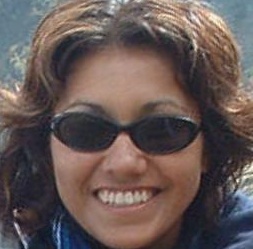一、安装:
pip install dlib
二、使用:
1、进行人脸检测
# -- coding: utf-8 -- import dlib import numpy as np import cv2 import os def rect_to_bb(rect): x = rect.left() y = rect.top() w = rect.right() - x h = rect.bottom() - y return (x, y, w, h) def shape_to_np(shape, dtype="int"): order=[0,1,15,16,17,18,19,20,21,22,23,24,25,26] xx=[] yy=[] for i in order: xx.append(shape.part(i).x) yy.append(shape.part(i).y) xmin=min(xx)-50 ymin=min(yy)-100 xmax=max(xx)+50 order=[4,5,6,7,8,9,10,11,12] xx=[] yy=[] for i in order: xx.append(shape.part(i).x) yy.append(shape.part(i).y) ymax=max(yy) #ymax=shape.part(33).y return xmin,ymin,xmax,ymax detector = dlib.get_frontal_face_detector() predictor = dlib.shape_predictor("./shape_predictor_68_face_landmarks.dat") imgdir = '1.jpg' wo_imag = cv2.imread(imgdir) rects = detector(wo_imag, 1) shapes = [] for (i, rect) in enumerate(rects): if i==0: shape = predictor(wo_imag, rect) (xmin, ymin, xmax, ymax) = shape_to_np(shape) if ymin<0: ymin=0 if xmin<0: xmin=0 if ymax>wo_imag.shape[0]: ymax=wo_imag.shape[0] if xmax>wo_imag.shape[1]: xmax=wo_imag.shape[1] wo_imag_face=wo_imag[ymin:ymax,xmin:xmax,:] cv2.imwrite('2.jpg', wo_imag_face)
结果图像:


2、进行人脸对齐
# --coding:utf-8-- import cv2 import dlib import numpy import os PREDICTOR_PATH ="/home/wjj/A_soft/dilb/shape_predictor_68_face_landmarks.dat" SCALE_FACTOR = 1 detector = dlib.get_frontal_face_detector() predictor = dlib.shape_predictor(PREDICTOR_PATH) FACE_POINTS = list(range(17, 68)) MOUTH_POINTS = list(range(48, 61)) JAW_POINTS = list(range(0, 17)) RIGHT_BROW_POINTS = list(range(17, 22)) LEFT_BROW_POINTS = list(range(22, 27)) RIGHT_EYE_POINTS = list(range(36, 42)) LEFT_EYE_POINTS = list(range(42, 48)) NOSE_POINTS = list(range(27, 35)) POINTS1 = list(range(31, 35)) POINTS2 = list(range(48, 60)) ALIGN_POINTS = (POINTS1+POINTS2) def transformation_from_points(points1, points2): points1 = points1.astype(numpy.float64) points2 = points2.astype(numpy.float64) c1 = numpy.mean(points1, axis=0) c2 = numpy.mean(points2, axis=0) points1 -= c1 points2 -= c2 s1 = numpy.std(points1) s2 = numpy.std(points2) points1 /= s1 points2 /= s2 U, S, Vt = numpy.linalg.svd(points1.T * points2) R = (U * Vt).T return numpy.vstack([numpy.hstack(((s2 / s1) * R, c2.T - (s2 / s1) * R * c1.T)), numpy.matrix([0., 0., 1.])]) def get_landmarks(im): rects = detector(im, 1) #rects=rectss[0] if len(rects) > 1: rects=rects[0] #if len(rects) == 0: # print ('NoFaces') return numpy.matrix([[p.x, p.y] for p in predictor(im, rects[0]).parts()]) def read_im_and_landmarks(fname): im = cv2.imread(fname, cv2.IMREAD_COLOR) im = cv2.resize(im, (im.shape[1] * SCALE_FACTOR, im.shape[0] * SCALE_FACTOR)) s = get_landmarks(im) return im, s def deal_landmarks(landmarks): order=[37,38,39,40,41,42] im = cv2.imread(fname, cv2.IMREAD_COLOR) im = cv2.resize(im, (im.shape[1] * SCALE_FACTOR, im.shape[0] * SCALE_FACTOR)) s = get_landmarks(im) return im, s def warp_im(im, M, dshape): output_im = numpy.zeros(dshape, dtype=im.dtype) cv2.warpAffine(im, M[:2], (dshape[1], dshape[0]), dst=output_im, borderMode=cv2.BORDER_TRANSPARENT, flags=cv2.WARP_INVERSE_MAP) return output_im w_img='w.jpg' im1, landmarks1 = read_im_and_landmarks(w_img) wo_img='wo.jpg' im2, landmarks2 = read_im_and_landmarks(wo_img) M = transformation_from_points(landmarks1[ALIGN_POINTS],landmarks2[ALIGN_POINTS]) #M = transformation_from_points(landmarks1,landmarks2) warped_im2 = warp_im(im2, M, im1.shape) cv2.imwrite('warped_im2.jpg', warped_im2)
效果: